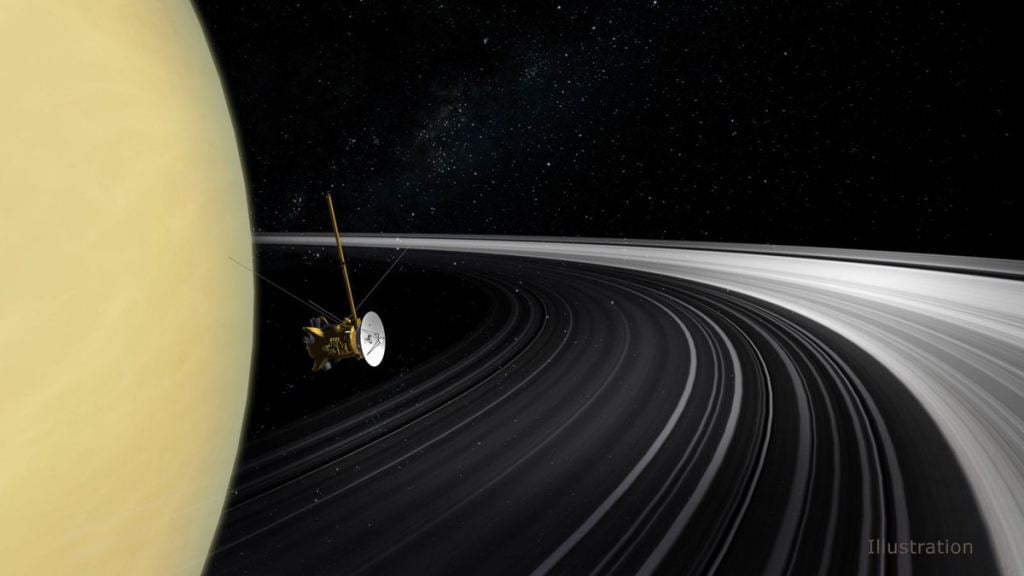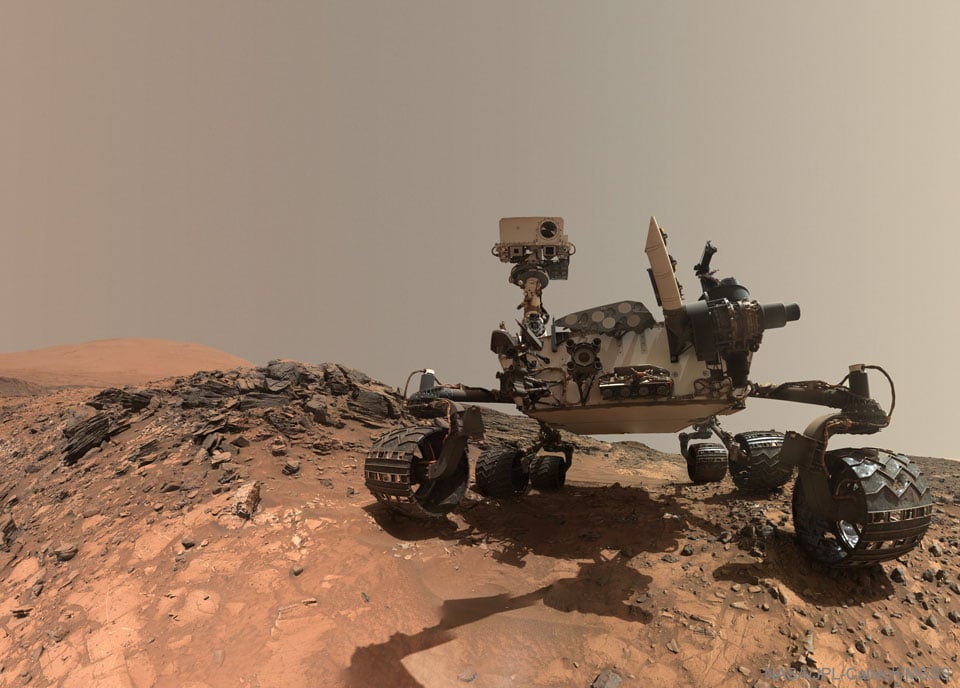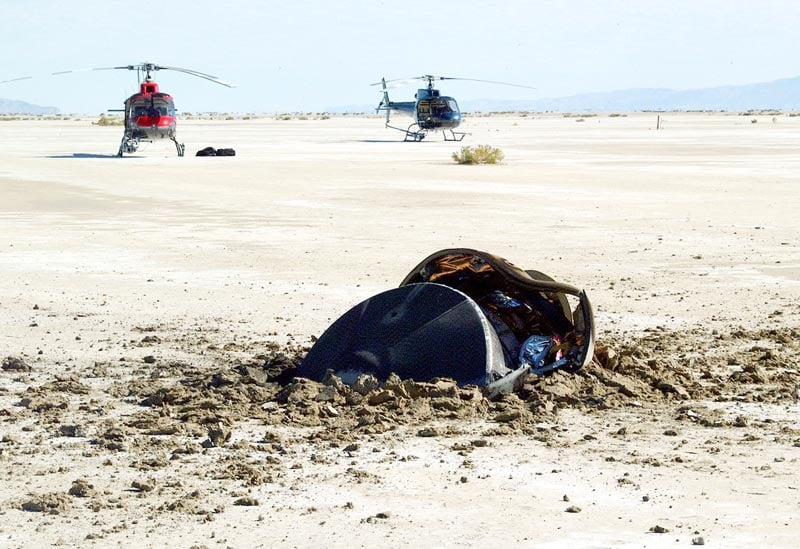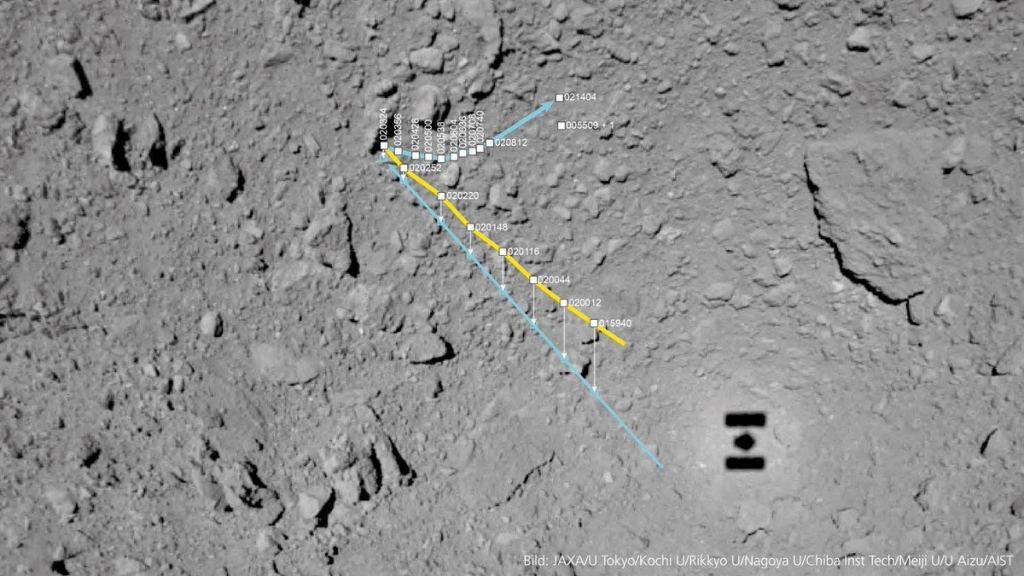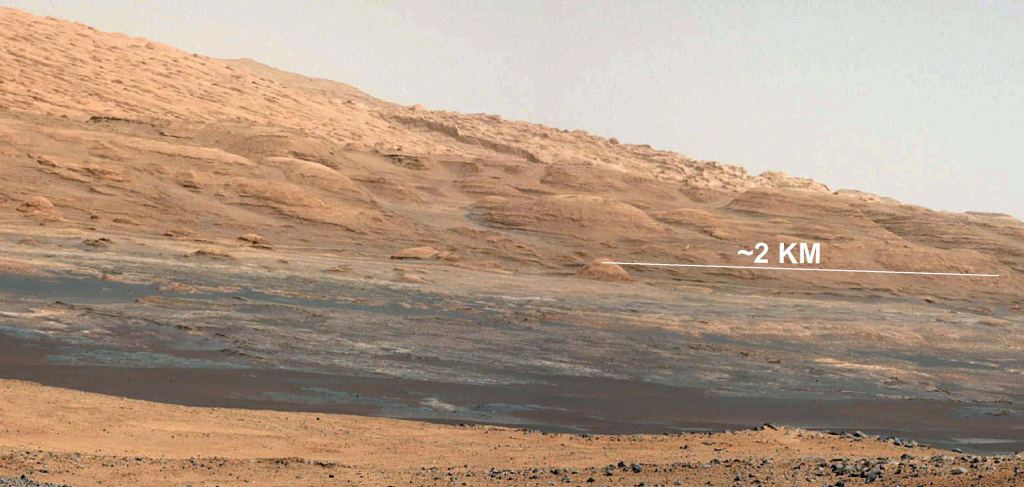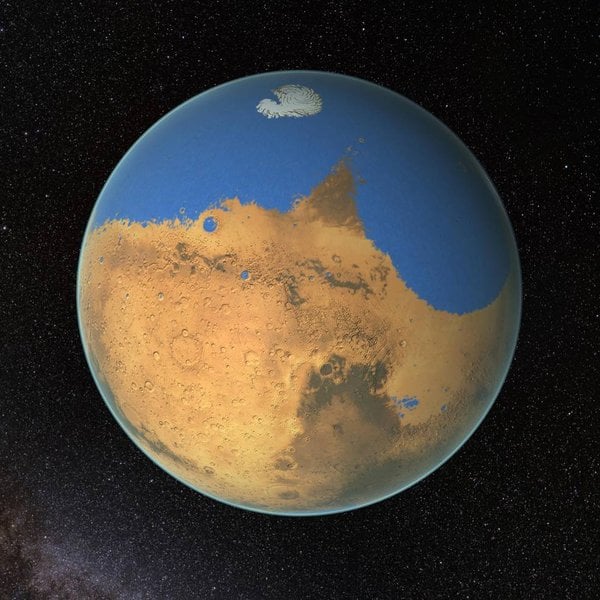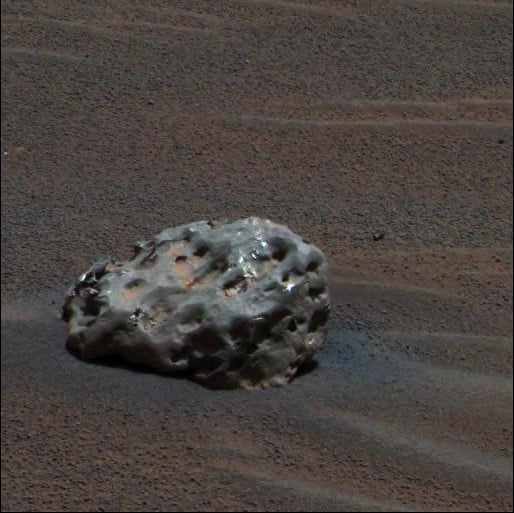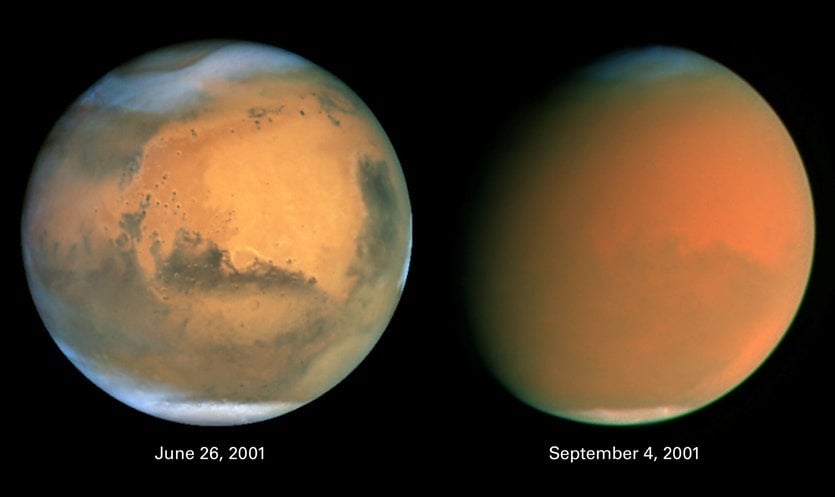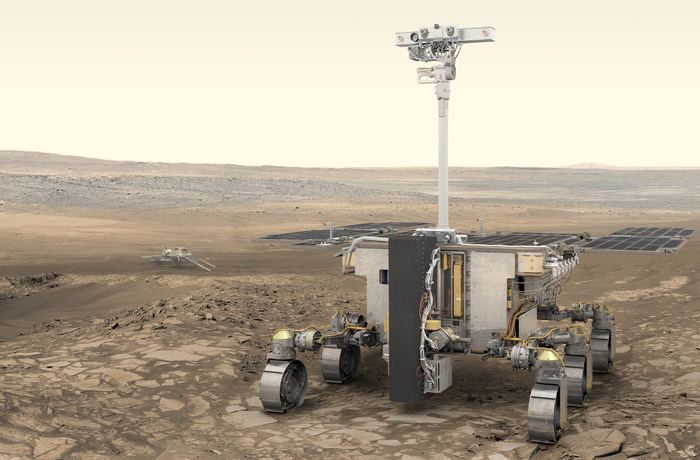One of the great accomplishments of the Apollo missions was to bring home hundreds of kilograms of lunar rock. Suddenly, geologists had a lifetime's worth of lunar samples captured from several different spots across the Moon. These rocks and dust have been under continuous analysis since the Apollo 11 astronauts came home over 50 years ago.
And they're still making discoveries.
Scientists have samples of the Sun's solar wind, particles from a comet's tail, a few grams from an asteroid, with more coming shortly.
But there's one world, the focus of so much scientific study, which has never had a sample returned: Mars.
NASA and the European Space Agency have been making plans to bring a sample home from Mars for decades, and now, missions could fly in the next few years, finally bringing a chunk of the Red Planet home to Earth for us to study directly.
History of Sample Return Missions
Space exploration happens in stages. First you start with a scouting flyby, where a spacecraft goes on a quick trajectory past a world, providing an initial set of images and data. Think of the Voyager's Grand Tour through the Solar System, or New Horizons visiting Pluto.
Then you return with an orbiter, a spacecraft that can remain in place for years, studying the surface of a world in great detail. Consider the Cassini spacecraft, which orbited Saturn 294 times, took more than 450,000 pictures, and changed our understanding of the Ringed Planet forever.
Then come the landers and rovers. Of course, the best example of this is Mars, with Spirit and Opportunity, as well as Curiosity, which together have captured hundreds of thousands of images, drilled rocks, and found evidence of past water on Mars.
Then come the sample return missions. This is the stage that the space agencies have only tried a few times.
Apart from the Apollo mission, the first spacecraft to bring samples from space back to Earth were the Soviet's Luna mission. In 1970, Luna 16 brought home 101 grams of lunar regolith, followed by Luna 20, and Luna 24. Although they brought a fraction of the material returned by the Apollo missions, it was from different locations on the Moon.
The next spacecraft to return a sample home was NASA’s Genesis mission. It was launched in 2001 to collect samples of the Sun's solar wind, and bring them back home to Earth.
It opened up its sample collectors on April 1, 2004, and then returned to Earth in September of the same year. Unfortunately, its parachute failed to open properly, and the spacecraft smashed hard into the Utah desert.
Despite the hard landing, scientists were able to retrieve usable samples, which helped them discover that the Earth might have formed from different solar nebula materials than the Sun.
Then came NASA’s Stardust mission, which flew through the tail of Comet Wild 2 in January 2004, and then returned its collector capsule back to Earth two years later. Analysis of these particles showed scientists that comets contained particles ejected from the Sun early on in its history, and might had a different way of forming than astronomers had predicted.
The last sample return mission was JAXA’s Hayabusa mission, overcoming all kinds of difficulties, including getting directly hit by a solar flare, and the loss of its reaction wheels, and the failure to deploy its hopping lander. But incredibly, mission controllers were able to get the spacecraft home, with a few precious micrograms of asteroid material on board.
There are missions out there right now: Hayabusa 2 and OSIRIS-REx which will be bringing even more asteroid samples back home to study. JAXA is even planning a mission to return a sample from the moons of Mars.
So what about a sample return mission to Mars itself?
What Can We Learn From a Mars Sample Return Mission?
We've actually learned quite a bit about the geology and atmosphere of Mars because there are chunks of the Red Planet found here on Earth. They were smashed out of Mars by a giant asteroid impact millions of years ago, and they floated through space, eventually striking Earth and incredibly surviving a trip through the atmosphere.
Scientists have random pieces of Mars, but now they want a sample of their choosing. And that means sending a sample return mission directly.
NASA has actually been planning for a Mars sample return mission since the early 1970s, even before the launch of the Viking spacecraft.
The goals of a return mission would include the search for life, not just life today, but past life, and even the chemical precursors of life.
By returning pristine samples of Mars back home, scientists could perform all kinds of experiments on the Martian regolith, exposing it to water, thicker atmosphere and nutrients to see if there's any active bacteria. This experiment was attempted with Viking, but the results were inconclusive and planetary biologists still argue over them.
They could analyze the samples under powerful microscopes, searching for any microscopic fossils, or any other indication there's life there.
In addition, scientists could understand the history of the surface of Mars, and how it was affected by water over millions of years.
Samples could be returned from some of the most interesting spots, like the sediments of lakes, deposits around hydrothermal vents, and the deltas of ancient rivers.
They could bring back samples from recent and ancient meteorite strikes, volcanic eruptions, and regions that were exposed to wind for a long time.
They could also study the long term history of Mars over billions of years, to try and understand when vast planetary changes occurred to make the planet so cold and dry. When did the asteroid bombardment settle down?
They could even sample pieces of the meteorites that litter the surface of Mars, sampling other worlds at the same time.
These samples would ideally be sent home before the first human sets foot on the surface of Mars. We already know there's toxic chemicals in the Martian regolith, but what about the dust that settles out of the atmosphere? Will it be a risk if astronauts breathe it? What about material that's deeper down below the surface?
By studying this material, scientists would also be able to understand how well astronauts could live off the land. To use regolith for building material, and growing plants. As well as breaking it up chemically for various raw materials.
Are different parts of Mars more useful than others?
Mars Sample Return Mission Plans
One of the earliest plans for a sample return mission to Mars was called the Sample Collection for Investigation of Mars (or SCIM). This would be a relatively inexpensive scout-class mission that would fly through the atmosphere of Mars as low as 40 km altitude, collecting dust and atmospheric gas.
This would be high enough so the spacecraft wouldn't be captured by Mars. Then it would return the samples to Earth. By studying these samples, scientists could match up the atmospheric sample with the gases found in those Mars rocks to be certain they came from the Red Planet. They'd be able to study the Martian dust up close, you know, the dust that can form planet-wide storms capable of ending rover missions, and could be a risk for future astronauts.
The proposal was made in 2001, for a mission that would fly in 2007 and return samples by 2010, but it never got off the ground.
But in 2009, NASA and the European Space Agency started making serious plans to bring a piece of Mars home, formally announcing their cooperation on a mission.
Anticipating the future sample return mission, both NASA and ESA have built their upcoming rovers to be the first stage in sending material back home.
As it crawls across the surface of the Red Planet, NASA’s Mars 2020 rover will collect interesting samples and then drop them on the surface as it goes. ESA's Rosalind Franklin rover, also due for launch in 2020, will collect and store samples from the surface of Mars in pen-sized canisters, which will be ready for pickup.
A sample return mission would have three parts.
First, there'd be a fast-moving fetch rover built by the European Space Agency to collect samples for study. Then a NASA ascent vehicle which would transfer the samples to Mars orbit. And finally, an orbiting mission from ESA that would retrieve the samples and bring them back to Earth.
ESA’s Sample Fetch Rover would be a relatively light-weight vehicle, no greater than about 120 kilograms. It would need to be able to travel 20-30 kilometers going 200 meters per day, autonomously routing around hazards in its way. Over the course of this period, it would pick up dozens of samples left on the surface by Mars 2020 or Rosalind Franklin, choosing the 30 or so most scientifically interesting to send home.
After several months of collecting samples, the Fetch Rover would arrive at the Mars Sample Retrieval Lander. This is a spacecraft that has many similarities to NASA's Curiosity and Mars 2020 rovers.
It would use a heatshell then parachute as it enters the Martian atmosphere, finally lowering the ascent rocket to the surface of Mars. It would sit on Mars for up to 150 days, waiting for samples from the Fetch Rover.
When the samples were loaded on board, the Ascent Vehicle would fire its hybrid or solid rocket motor, carrying the samples into a 350-km altitude orbit.
Then it would be intercepted by ESA’s Earth Return Orbiter, making a completely autonomous rendezvous millions of kilometers from Earth. It'll then use a solar-electric ion engine to make the long journey back to Earth.
And then, some time in the 2030s, scientists will get their hands on about 500 grams of material from the surface of Mars.
In early 2019, the White House included money in their proposed budget for a Mars Sample Return mission, which ideally could launch as soon as 2026. Although a mission like this has been proposed many times before, this is the first time that actual funding was set aside. It gave NASA $109 million in 2020 to work on "future Mars activities" which is essentially the sample return mission.
So now, after almost 50 years of planning, a serious sample return mission to Mars is in the works.
Get My Weekly Email Newsletter:
Once a week I gather up all my space news into a single email newsletter and send it out. It's got pictures, brief highlights about the story, and links so you can find out more. Go to universetoday.com/newsletter to sign up.
 Universe Today
Universe Today

